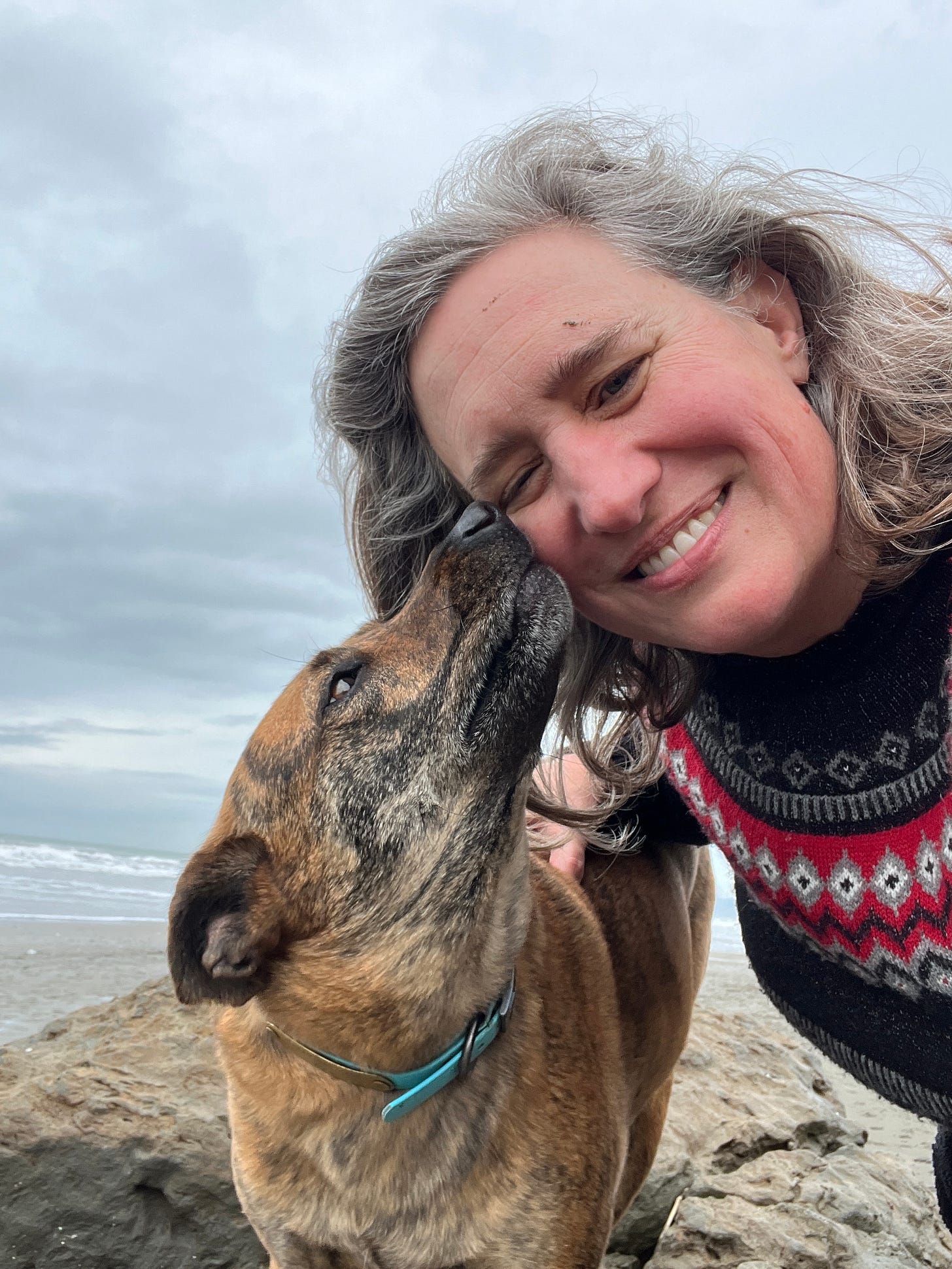Dear voyagers,
If you look at my writing over the years, you’ll see discussion of mental health in all of its permutations — from diagnosis to treatment, public policy to innovation.
What you’ll never find is a post that says, “I finally understand what is wrong with me and how to fix it.”
Until today.
In the past few months I have learned, after a lifetime of trial and error, that I am one of those chronic pain voyagers who suffers from what John Sarno called Tension Myositis Syndrome (TMS).1 In other words, I suffer from physical pain due to mild oxygen deprivation as a result of my dysregulated nervous system. The good news? Acknowledging, recognizing, and accepting a TMS diagnosis is the biggest hurdle to recovery.2
Many things had to line up for me to be open to a diagnosis that was not red-stamped and green-lit by the Western medical world. I’ve described Clinical Somatics as a gamechanger, and for me it has been. I started Sarah Warren’s online course (Level One costs $49) in the middle of January 2024, and am now deep into Level Two learning. I practice every morning for a minimum of 30 minutes. My morning practice revealed to me that most of my muscles are in a hypertonic state3 most of the time. I read Sarah’s book and learned why that was, and how to change it. My hip, neck, and back pain started to recede. I learned how to belly breathe (for real this time, despite trying it many times in the past without success). I figured out that I had something called “hourglass syndrome,” meaning I have been gripping my stomach muscles in my upper abdomen too tightly since…forever?4 I had no idea the harm I was causing my body then, or that these early self-judgements would become invisible and engrained behaviors that would literally deprive my system of the oxygen it needed to properly function.
It wasn’t until I started to physically experience what nervous system regulation felt like that I became open to listening to Sarno disciple Nicole Sach’s podcast The Cure for Chronic Pain. I cannot begin to tell you how much that title did not appeal to me. Even now, it is hard for me to write these words without my inner critic piping up to say “What kind of woo woo bs is this?” And that inner critic, my friends, is why this post is titled the way it is.
When you are too smart to heal, you live in a skeptical state of mind. You’ve researched the landscape of mental health. You’ve tried a variety of therapy modalities. You’ve seen acupuncturists, Ayurvedic healers, and massage therapists of every ilk. You’ve forced Chinese herb concoctions down your throat and have tried every kind of supplement and probiotic. Yes, you’ve worked to heal your gut. You’ve tried cupping. You’ve been to doctors, oh so many doctors: ear, nose and throat; neurologists; allergists; dermatologists; gastroenterologists. You’ve seen physical therapists and nutritionists and followed everyone’s instructions to a T, meticulously taking all of the drugs you are prescribed. You’ve read all the books. As a result, you’ve hardened your heart. You assume nothing can help you feel better because nothing has worked so far. After all, you are the person that your friends think to ask for mental and physical health recs because they know that you are “smart” about such matters.
But what if you missed the deeper truth because of your skepticism and smartness? My neurologist first handed me Dr John Sarno’s The Mindbody Prescription in 2015. I read it promptly and diligently and thought, “Oh interesting…perfectionism can cause back pain, interesting…yeah let’s cram that factoid into my head.” What I did not realize then: cramming my head with facts was a symptom of my condition. It was another way my brain was trying to distract me from repressed emotional pain.5 “TMS can be caused by something as simple as a energy mismatch between a child and their primary caregiver,” says Nicole Sachs in her podcast. I may not relate to the word “trauma,” but TMS doesn’t care about categorization or word choices. Many different things can lead to lower case “T” trauma response. For a certain type of person (like me), that response becomes second nature at an early age and can lead to a lifetime of migraines, nausea and lightheadness.
“Ultimately, stomach gripping can reduce your oxygen intake by as much as 30%,” says the Cleveland Clinic. That’s an astonishing number. I’ve never had a doctor or therapist mention to me that my chronic pain could be a sign of mild oxygen deprivation. This was a puzzle I’ve had to solve myself. And now I hand my mostly-finished puzzle, with its pieces in place, to you, dear reader.
For nine years, I’ve been writing about these topics in order to help people and to feel less alone. If you are like me — an overthinker, people pleaser, and perfectionist with neck and shoulder pain, migraines, nausea — I hope that you will set down your skeptical armor for just one moment and think about what I am saying here.
I suspect I’m not the only puzzler out there. I believe that my readers stay with me because they can relate to what I’ve been through. If that is you, please reflect on what I’ve said here. Don’t be too smart to heal.
What I now do every day to heal my body and mind
At least 30 minutes of Clinical Somatics first thing in every morning
Around 5 minutes twice a day of polyvagal exercises including the Basic exercise, The Salamander, and the Sphinx pose with turned head and eyes
Around 15 min of Nicole Sach’s “Journal speak,” which simply means allowing yourself to write from a place of pure emotion, especially anger and sadness
Sitting in the sun for at around 10 min a day
Practicing belly breathing / letting my belly relax many times during the day
Listening to the stories of other people who have healed from TMS
TMS, not to be confused with Transcranial Magnetic Stimulation, is still seen with skepticism by the medical industry, which is one of the reasons it took me so long to recognize it in myself. I, too, am a skeptical person who always looks for research-backed approaches to physical and mental health.
People with TMS tend to be like me — overthinkers whose inner critics don’t think a podcast called “The Cure for Chronic Pain” is for them. Their level of desperation has to be very high to get over those internal walls. In my case, somatics helped me connect the dots. My lived experience proved the truth of the diagnosis.
Google’s new AI-enhanced search results describe hypertonic muscles as “a muscle with increased passive stiffness or tightness.” This simply means that unless I teach them to fully relax using Clinical Somatics, my muscles stay in a half-stressed state that causes me pain and stiffness.
Pelvic floor issues like the ones that led to my hysterectomy are often linked to this misguided behavior, which can stem from feeling that your stomach is “too big.” Poor little teenage Meredith and her desire to look like her bikini-clad friends!
Despite reading book after article about trauma, I never thought of myself as someone who was in the “trauma” category. Trauma is a very serious word. I never thought that my small daily struggles could rise to the level of “somatic trauma response.”






I remember the first time I shifted into belly breathing, I was like "Why did no one teach me this!?" It's so freeing to extend out your belly and my relationship with my womb started to deepen.
Thank you so much for sharing! I took a screenshot of your routine to try some of the methods.